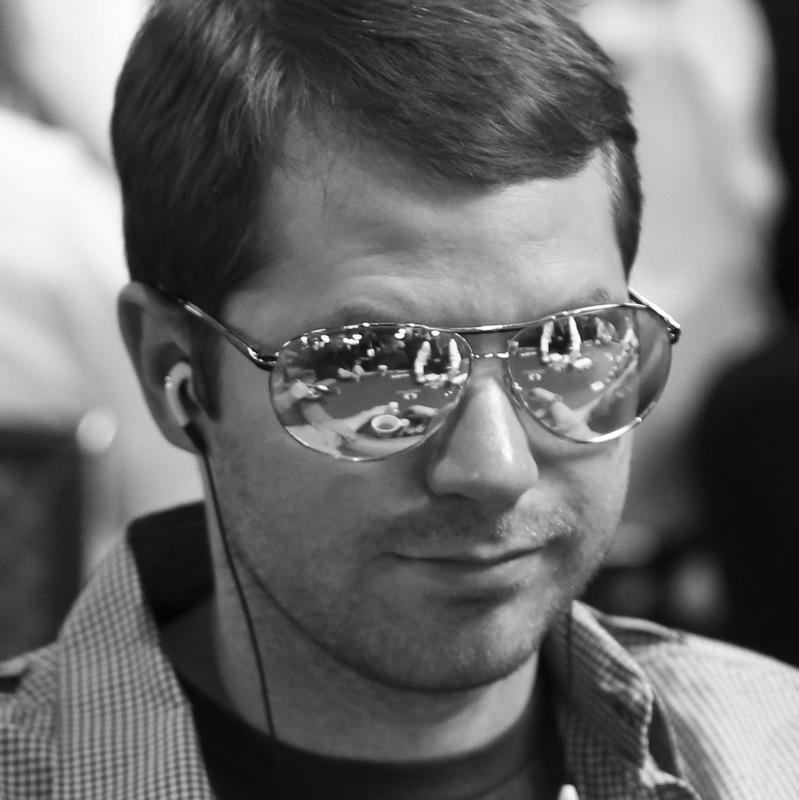






Busting the WPT Tournament of Championsby Jonathan Little | Published: Jul 04, 2018 |
|
|
After studying a lot and taking sixth place in the WPT Bobby Baldwin Poker Classic at Aria for $74,000, I was feeling great going into the $15,000 buy-in WPT Tournament of Champions. My seat draw was decent enough, but I was knocked down to 60 big blinds after my A-A lost to quads on an incredibly dry board. I don’t remember the exact action, but I may have been able to fold to my opponent’s large river bet. Then again, I am not known for folding the top of my range.
About four hours into play, the following hand came up that cut my experience short. An overly loose, splashy player limped from the hijack seat and a good, loose-aggressive player raised to 3.25 big blinds from the cutoff. A good, loose-aggressive online kid then three-bet to 12.5 big blinds from the small blind. All of these players started with about 150 big blinds.
I looked down at 10-10 in the big blind. With my 60-big blind stack, I have a few options:
Folding is by far the most prudent option, but also the weakest. It is nearly impossible that at least one of my other options will not turn some sort of a profit, given all my opponents are loose and aggressive. If the three-bettor was especially tight, folding would become much more reasonable.
Cold calling may have some merit, given I will be in position against the three-bettor, but that may result in a cascade of calls which will often not work well for me because I will likely only be able to realize my equity if I flop a set. Notice that strictly set mining is not profitable because I am not getting anywhere near the required 10:1 implied odds. Calling also allows the three-bettor to realize his equity with his marginal hands and bluffs that would fold to a four-bet. In general, cold calling with stacks shallower than 100 big blinds is a recipe for disaster.
I could four-bet to 22.5 big blinds or so, looking to fold to an all-in, but I really don’t like that play. If the person who pushes all-in ever has A-K (or any bluff), folding is a disaster.
Finally, I could go all-in. The main downside to this play is that when someone has A-A through J-J, I will get called every time and will be in horrible shape. However, this should not happen too often, assuming my assessment of the opponents’ strategies is correct. The initial raiser is likely raising with a bit more than his normal raising range in order to play heads-up in position against the splashy limper. The three-bettor may be three-betting wider than normal because he expects the initial raiser to be wider than normal. If the three-bettor has a polarized range containing about 65 percent “bluffs” that will fold to my all-in, going all-in wins about three big blinds, which is a significant profit. Even if he is three-betting on the tighter side, going all-in roughly breaks even. The main time going all-in is bad is when one of the three players has an especially tight range that will call most of the time, but I definitely do not think that is the case in this situation.
After considering all my somewhat marginal options, I decided to go all-in. The three-bettor quickly called with K-K and I was out.
Looking back, there were perhaps a few tiny things I could have noticed that may have allowed me to fold, but then again, I may just be looking for some sort of justification to fold. The raiser’s sizing was quite small, to only 3.25 big blinds. That size gives me in the big blind and the limper a decent price to call, meaning the raiser will rarely win the pot preflop. This means that the raiser may have a stronger range than I expected. Also, the three-bettor made it quite large, to 12.5 big blinds. While that sizing is certainly not gigantic or out of line, it polarizes his range. This means the three-bettor either has a premium hand that will call my all-in every time or a junky hand that will easily fold. If the three-bettor’s range happens to be weighted towards value hands because he views the initial 3.25 big blind raise as strong, then my all-in may be quite poor.
That said, I am fine with my play. It is high risk and high variance, but sometimes that is what you have to do to maximize equity. Sometimes maximizing equity results in ruin. ♠
 Jonathan Little is a two-time WPT champion with more than $6 million in tournament winnings. Each week, he posts an educational blog and podcast at JonathanLittlePoker.com, where you can get a FREE poker training video that details five things you must master if you want to win at tournament poker. You can also sign up for his FREE Excelling at No Limit Hold’em webinars at HoldemBook.com/signup.
Jonathan Little is a two-time WPT champion with more than $6 million in tournament winnings. Each week, he posts an educational blog and podcast at JonathanLittlePoker.com, where you can get a FREE poker training video that details five things you must master if you want to win at tournament poker. You can also sign up for his FREE Excelling at No Limit Hold’em webinars at HoldemBook.com/signup.
Features
The Inside Straight
Strategies & Analysis